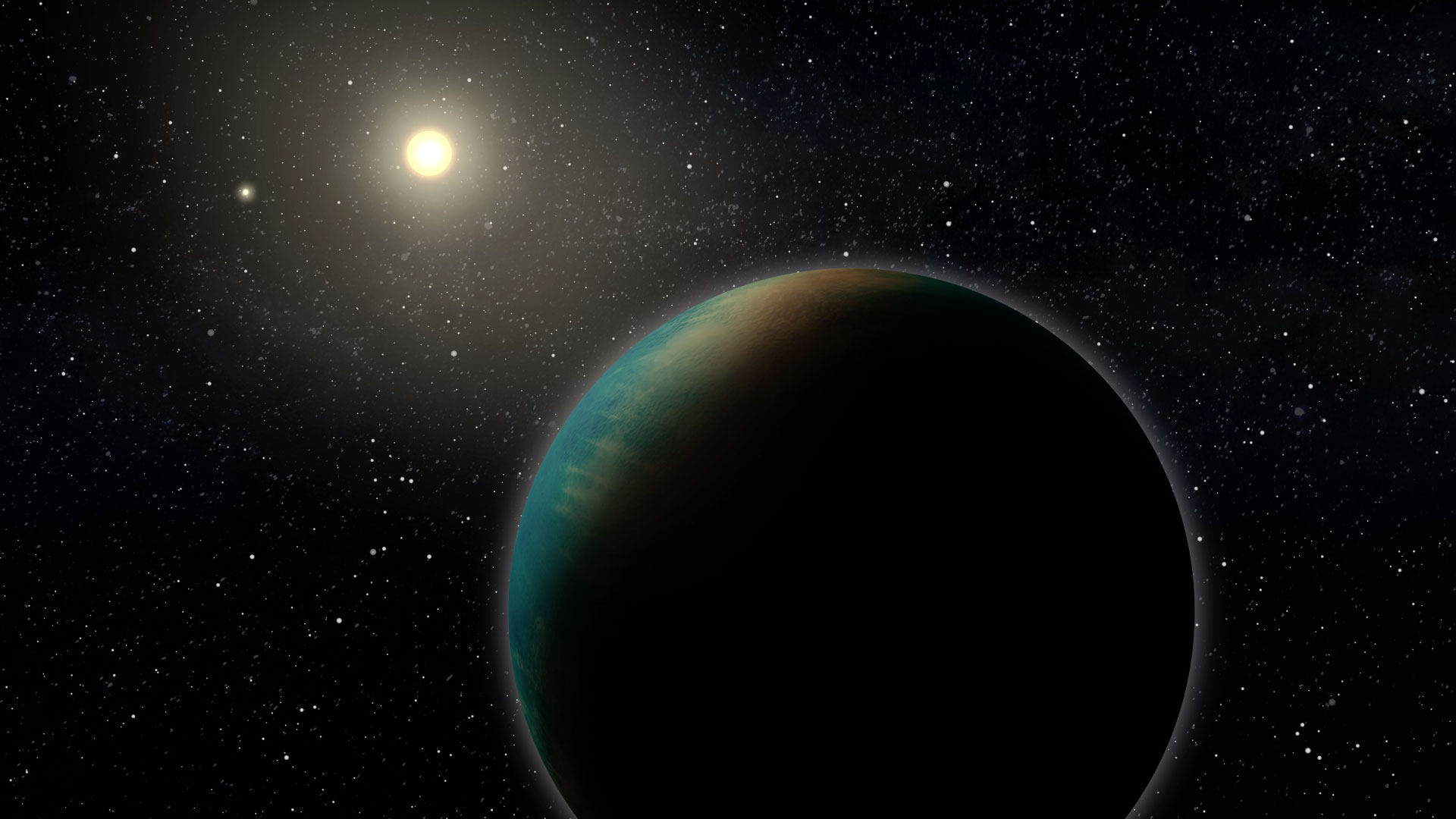Possible water world spotted orbiting an alien star
The planet, of which up to 30% is made from water, will be a top target for the James Webb Space Telescope.

A habitable-zone ocean planet has been discovered orbiting a red dwarf in a binary star system 100 light-years away from Earth, and could provide a tantalizing target for the James Webb Space Telescope (JWST or Webb) to study.
The exoplanet, cataloged as TOI-1452b, was initially spotted by NASA's Transiting Exoplanet Survey Satellite (TESS), but because TESS was unable to resolve the binary system into its two stars, the transiting object's precise nature was uncertain. So, a team of astronomers led by Charles Cadieux, who is a Ph.D. student at the Université de Montréal in Canada, followed up on it.
First, the researchers commandeered the PESTO (an acronym of the French words for "extra-solar planets in transit and occultation") instrument on the 1.6-meter telescope at the Observatoire du Mont-Mégantic (OMM) in Quebec, Canada, to resolve the two stars of the binary system.
Related: 7 ways to discover alien planets
The astronomers found that the stars, which are both red dwarfs, are split by 97 astronomical units (one astronomical unit, or AU, is the average distance between Earth and the sun, about 93 million miles or 150 million kilometers). They also confirmed that TOI-1452b orbits and indeed transits (moves in front of) one of the two red dwarfs. Based on the amount of the star's light blocked by the planet during the transit, Cadieux's team calculated that the planet has a diameter 1.67 times that of Earth and orbits its red dwarf star once every 11.1 days.
Cadieux's team then moved on to the Canada–France–Hawaii–Telescope located in Hawai'i, which houses an instrument called SPIRou that can measure the radial velocity of the planet's host star. Radial velocity refers to the amount by which the star "wobbles" back and forth as it is tugged by the gravity of its orbiting planet. Based on the radial velocity measurements of the star, TOI-1452b must have a mass about 4.8 times greater than Earth's.
Such worlds are termed "super-Earths" — too small to be gaseous, but larger and stranger than the terrestrial planets in our solar system. With the radius and the mass of TOI-1452b in hand, scientists could calculate its bulk density, and the result implies that 22% of the planet's mass, and perhaps as much as 30%, is made from water surrounding a rocky core. This is a similar proportion to the amount of ice on the frozen moons in our solar system, such as Jupiter's Europa and Saturn's Titan.
Breaking space news, the latest updates on rocket launches, skywatching events and more!
Unlike those icy moons, TOI-1452b is in the habitable zone, or Goldilocks zone, of its star — the region around the star where temperatures are suitable for liquid water. Because red dwarfs are smaller than the sun and cooler, their habitable zones are scaled down and much closer in. If a planet in our solar system orbited the sun at the distance that TOI-1452b orbits its star, 5.7 million miles (9.1 million kilometers), it would be roasted. Around its red dwarf, however, TOI-1452b is comfortably temperate, and its water is very likely liquid.
"TOI-1452b is one of the best candidates for an ocean planet that we have found to date," Cadieux said in a statement. "Its radius and mass suggest a much lower density than what one would expect for a planet that is basically made up of metal and rock, like Earth."
Its relative proximity to the solar system means that TOI-1452b has now joined a select group of temperate exoplanets that are close enough for JWST to study their atmosphere and to search for potential signs of life, called biosignatures.
"As soon as we can, we will book time on Webb to observe this strange and wonderful world," René Doyon, an astronomer at the Université de Montréal and principal investigator of one of JWST's instruments, said in the statement.
The discovery of TOI-1452b is described in a paper published on Aug. 12 in The Astronomical Journal.
Follow Keith Cooper on Twitter @21stCenturySETI. Follow us on Twitter @Spacedotcom and on Facebook.

Keith Cooper is a freelance science journalist and editor in the United Kingdom, and has a degree in physics and astrophysics from the University of Manchester. He's the author of "The Contact Paradox: Challenging Our Assumptions in the Search for Extraterrestrial Intelligence" (Bloomsbury Sigma, 2020) and has written articles on astronomy, space, physics and astrobiology for a multitude of magazines and websites.
